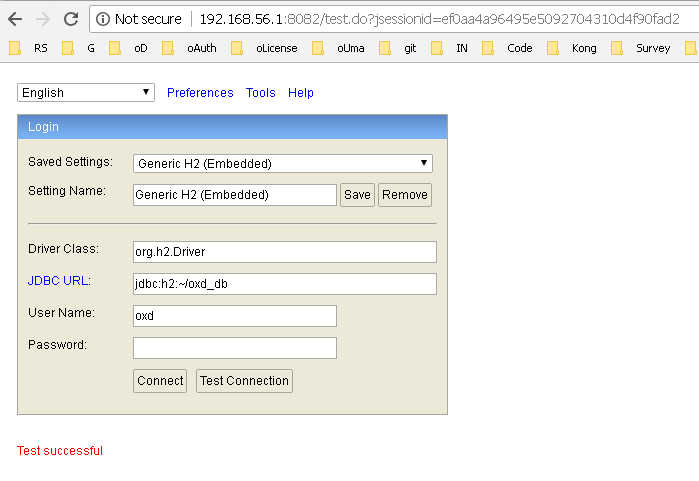Frequently Asked Questions (FAQ)#
General FAQs#
What is oxd?#
oxd is a mediator: it provides APIs that can be called by a web application more easily than directly calling the APIs of an OpenID Connect Provider (OP) or an UMA Authorization Server (AS).
How is oxd licensed, and how much does it cost?#
oxd is commercially licensed software. To start the oxd server, a valid license is needed, which can be obtained by registering on the oxd website. Each application (OAuth 2.0 client) that leverages the oxd service is billed USD $10 per month. The first 10 oxd clients are always free, and there is a five (5) day grace period for each new client–meaning: only clients active for 5 or more days are recorded for billing purposes. Usage fees are accumulated daily and charged at the end of each month. If your organization needs annual billing, schedule a call with us.
What types of applications can use oxd?#
Server-side web applications.
Where should oxd be deployed?#
By default, oxd-server must be deployed on the same host as the target web application(s). With the oxd-https-extension enabled, applications can call oxd over the web, enabling a central oxd service for many applications.
Can I use oxd for two-factor authentication (2FA)?**#
No. 2FA is implemented at the OP, not the client.
What are the support options?#
Gluu offers community support and VIP support. Anyone can register and enlist community support on the Gluu support portal. For guaranteed responses and priority support, learn more about VIP support.
Technical FAQs#
The get_tokens_by_code command fails with a No response from operation error#
It can happen if the code lifetime in the oxauth server is very short and the code expires before the token can be obtained. So in logs, you can see this:
2018-04-05 14:30:32,530 ERROR [org.xdi.oxd.server.op.GetTokensByCodeOperation] Failed to get tokens because response code is: null
2018-04-05 14:30:32,530 ERROR [org.xdi.oxd.server.Processor] No response from operation. Command: Command{command=GET_TOKENS_BY_CODE, params={"code":"cc36672e-f8b9-4958-9a7c-3d83c99c4289","state":"us7d1v37cn1fcsd1c0156adr16","oxd_id":"055cec18-bd2e-4b29-ae38-7428d1d7c7fb","protection_access_token":"51ebfa51-d290-410e-bd37-abb3a0d8ab0c"}}
To fix it, increase the authorizationCodeLifetime oxauth configuration value as explained here.
oxd-https-extension does not work because of a PROTECTION error.#
If you see an output in the logs similar to what is shown below, it means that the uma_protection scope is disabled for dynamic registration on the oxauth side.
Find the uma_protection Connect scope property Allow for dynamic registration, and make sure it is checked (set to true). Find more information about scopes here
2018-04-04 20:03:24,855 ERROR [org.xdi.oxd.server.service.UmaTokenService] oxd requested scope PROTECTION but AS returned access_token without that scope, token scopes :openid
2018-04-04 20:03:24,855 ERROR [org.xdi.oxd.server.service.UmaTokenService] Please check AS(oxauth) configuration and make sure UMA scope (uma_protection) is enabled.
2018-04-04 20:03:24,855 TRACE [org.xdi.oxd.server.service.IntrospectionService] Exception during access token introspection.
java.lang.RuntimeException: oxd requested scope PROTECTION but AS returned access_token without that scope, token scopes :openid
at org.xdi.oxd.server.service.UmaTokenService.obtainTokenWithClientCredentials(UmaTokenService.java:196)
at org.xdi.oxd.server.service.UmaTokenService.obtainToken(UmaTokenService.java:169)
How can I view data inside an oxd database manually without an oxd-server?#
By default, an oxd-server persists data inside a H2 embedded database. On a disk it should be visible as a oxd_db.mv.db file.
You can use any convenient database viewer to view/edit data inside the database. We recommend using a browser-based viewer, H2:
- Download http://www.h2database.com/html/download.html
- Run it (in the "Platform-Independent zip" case it is as simple as hitting
h2.shorh2.bat)
You will see connection details in the browser. Please specify the details as in oxd-conf.json file.
If everything is filled in correctly, in "Test Connection" you should see a "Test successful" message like in the screenshot below:

After hitting the "Connect" button, you will be able to view/modify the data manually. Please be careful not to corrupt the data inside; otherwise the oxd-server will not be able to operate in its stable mode.
How can I avoid client expiration?#
The register_site and setup_client commands generate clients dynamically, thus setting the lifetimes of these clients. The lifetime of the client is set on the OP side.
It is possible to extend a client's lifetime by calling the update_site command and set client_secret_expires_at to a chosen date. This field accepts the number of milliseconds since 1970. You can use https://currentmillis.com/ to convert this time to milliseconds. For example, Fri Jun 15 2018 12:28:28 is 1529065708906.
Note that setup_client creates 2 clients in oxd-server versions up to 3.2.0, so if you need to extend the lifetimes of both clients, call update_site with oxd_id and setup_client_oxd_id which are returned as the response from the setup_client command.
How can I use oxd with AS that does not support UMA ?#
Please set uma2_auto_register_claims_gathering_endpoint_as_redirect_uri_of_client in oxd-config.json to fails otherwise you may get no_uma_discovery_response if UMA is not supported on AS side.